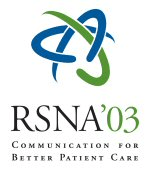Abstract:
HTML
Purpose: To evaluate sequential changes in salivary gland function before and after high dose radioiodine therapy (RIT) for thyroid cancer using salivary gland scintigraphy.
Methods and Materials: Forty-six patients(40 women, 6men,.Mean age 56yrs.) with thyroid cancer who were to undergo their first RIT were enrolled in the study. The dose of 131I given ranged from 3.563 to 5.55GBq (mean 3.84). The onset of salivary side effects following RIT was monitored during hospital admission and in the regukar follow up on basis of physycal examination, interviewing with patients including questionarie and a visual analog scale and salivary gland scintigraphy. Post theray I-131 scan were obtained in all to assess salivary uptake of radioiodine. Salivary scintigraphy was performed within a week prior to radioiodine ingesaiton (study 1 availablein all patients) , at 4-6 months (study2:available in 23 patients) and 6-12 months after RIT (sttudy 3: available in 9 patients). After 3 hours fasting, 555MBa of 99mTc pertechnetate was injected. Dynamic data (1min/F) were acquired for 30 minitues. Two ml of lemon juice was given at 20min post inejction to promote saliva discharge. Percent uptake of 99mTc at 20min (%UT) and excretion rate following lemon juice- induced disharge (%EX) was determined as parameters for salivary function.
Results: Sialoadenitis was occuurred in 15 out of 46 patients. A total of 51 glands werei nvolved. salivary Upta ke of 131I was observed in 38 galnds. There no statisticalldifferences in the % UTor % EX between involved glands and non-involved galnds. In addition. Neither %UT nor % X on the scan#2 was decreased
Conclusion: Sialoadnitis Salivary function was not signifiantly impaired by sialoadenitis or radioiodine uptake in the salivary gland on scan 2. However, Scan 3 showed decrease in the uptake or excreation stiulated by lemon juice in abour 40% of the gkand involved.
Questions about this event email: kunakada@med.hokudai.ac.jp
Kinoshita MD, R,
Sequential Evaluation of Salivary Gland Function Following High Dose Radioiodine Therapy for Thyroid Cancer. Radiological Society of North America 2003 Scientific Assembly and Annual Meeting, November 30 - December 5, 2003 ,Chicago IL.
http://archive.rsna.org/2003/3108220.html

